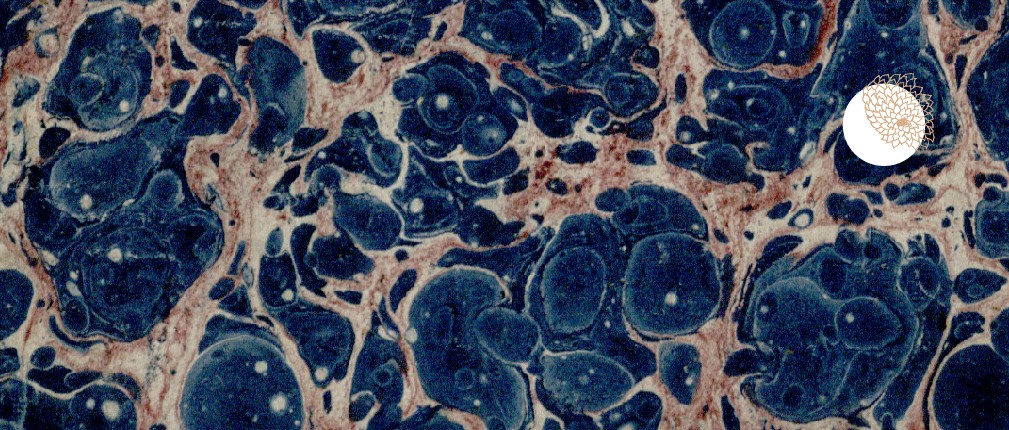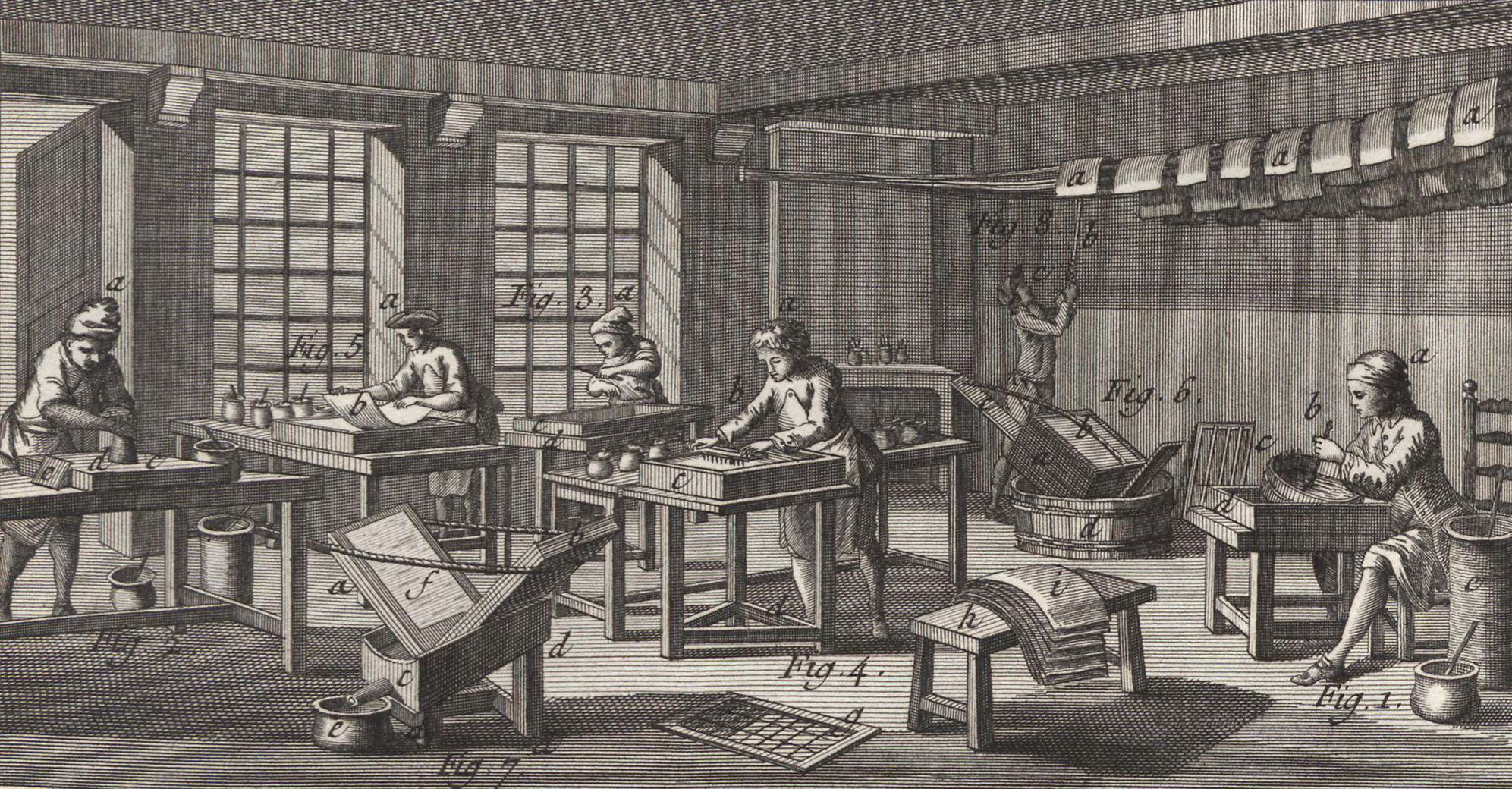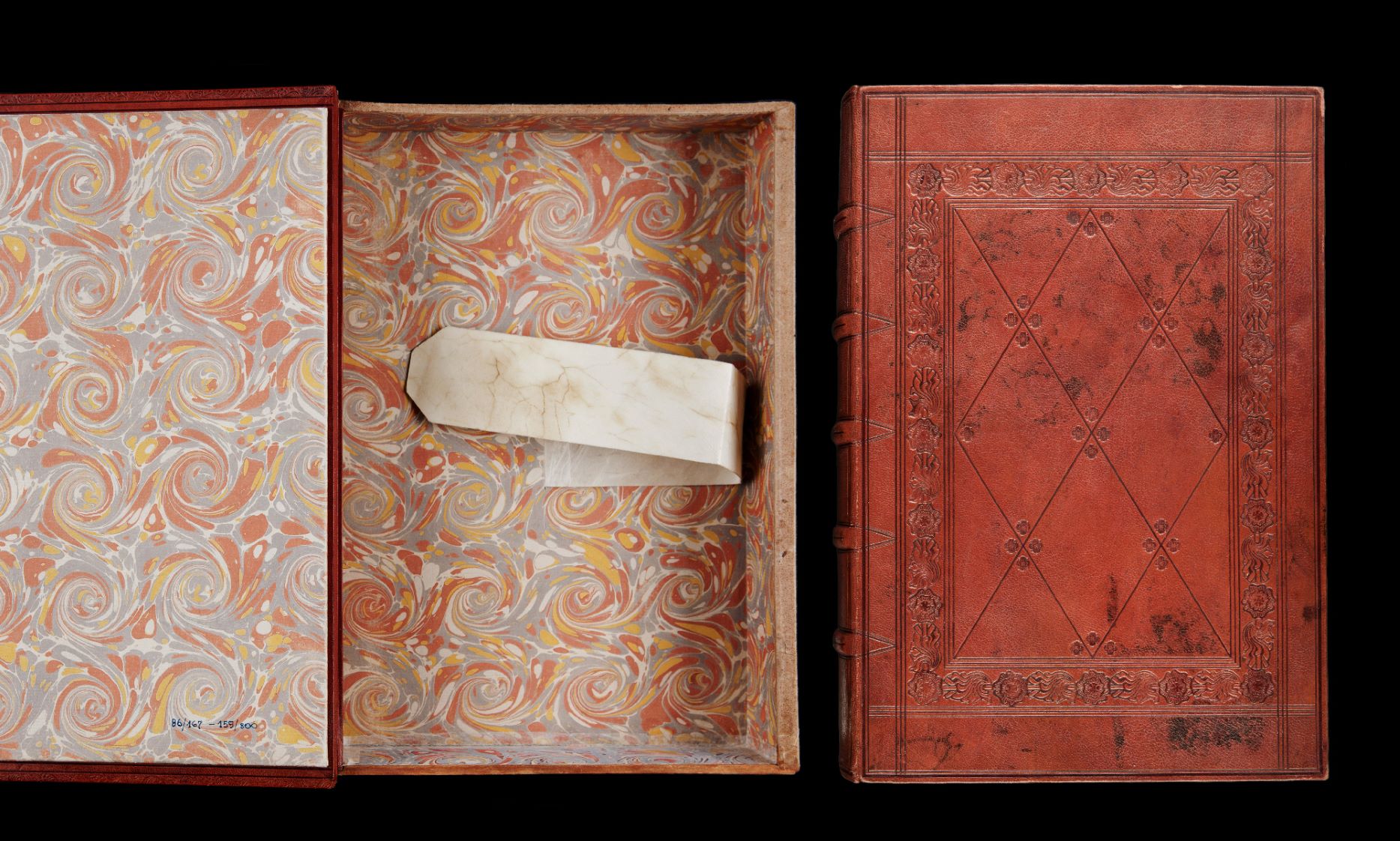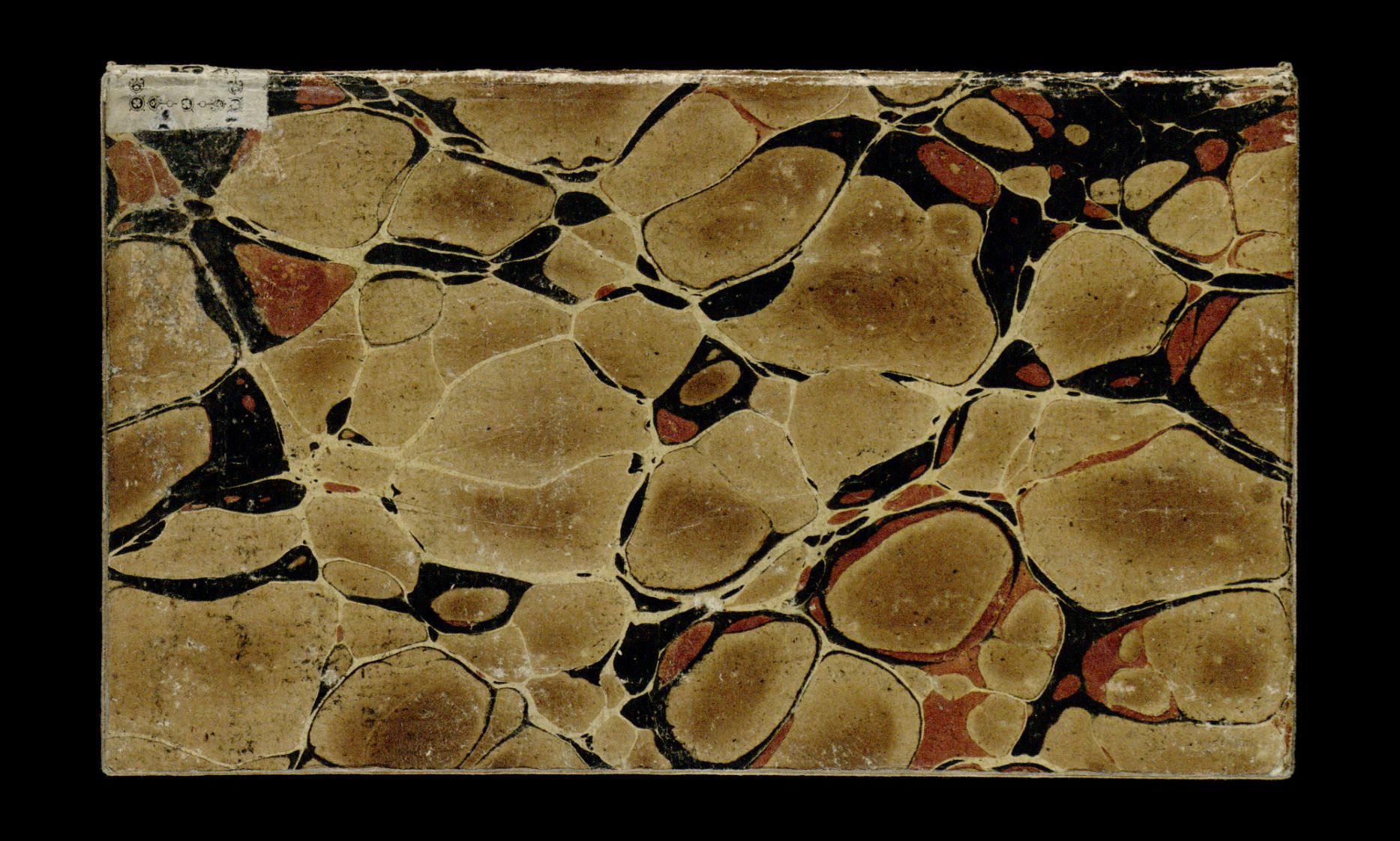
At the middle of the first month of autumn, on 15 September, Vilnius University Library has launched a series of virtual “Tales of Decorated Paper” that is dedicated to the five earliest paper decoration techniques that were used from its golden age – the 18th century – for the decoration of endpapers and covers of books, furniture, instruments or even wallpaper. Different historic paper decoration technique is presented every week. Today the part “A Ripple, Captured. Marbled Paper” presents to viewers paper decoration technique, which has received the most attention both from the public and researchers.
Marbled paper is a paper decoration technique that is closely related to the Eastern cultures. Suminagashi paper decoration technique from Far East gradually spread towards the West and became very popular in Persian and Arab countries. Considerably changed there, it became a significant part of calligraphy art and illumination of manuscripts. At present marbling technique ebru is a national heritage of Turkey.
The early marbled paper coming to Europe through the Middle East was called “Turkish paper”. It was named by Athanasius Kircher, who, as early as in 1646, one of the first in Europe, in his book Ars Magna Lvcis et Vmbrae (The Great Art of Light and Shadow) gave a detailed description of the marbling technique and presented it as one of intriguing phenomena of chemistry and optics. It is thought that the author himself possessed some skills in marbling and demonstrated them to his students.
 Paper marblers. An illustration (a fragment) for Denis Diderot’s and Jean d’Alembert’s ‘Encyclopaedia’ (‘Encyclopédie Méthodique: Ou Par Ordre De Matières...’, Paris, 1751–1766) article on paper marblers depicting the process and tools of 18th century paper marbling.
Paper marblers. An illustration (a fragment) for Denis Diderot’s and Jean d’Alembert’s ‘Encyclopaedia’ (‘Encyclopédie Méthodique: Ou Par Ordre De Matières...’, Paris, 1751–1766) article on paper marblers depicting the process and tools of 18th century paper marbling.
By the time when the first comprehensive and illustrated description of marbling technique was published in the second half of the 18th century in Europe in Denis Diderot and Jean d'Alembert's Encyclopédie, marbled paper was already quite well known and widely spread. Paints for such paper were made of pigments, binding agent, water and ox gall. A desired pattern was formed with special tools by dripping paints on the thickened water. A specially prepared sheet of paper was placed on the surface of water and thus, after removing it, marbled pattern was produced.
As marbling technique improved, more and more differing patterns were obtained, each of which had a more or less established historical title or one given by researchers, for instance, “French curl” - a very popular pattern of marbled paper in the second half of the 17th and throughout the 18th century – or "Spanish wave". The latter pattern effect is created by stirring the marbled sheet by repetitive movements.
What other special patterns were produced by employing this particular technique, how they were used for decoration of various objects and what are the other stories related to this decoration technique - you will get answers to these and many other questions by visiting the virtual story A Ripple, Captured. Marbled Paper.
 A case for document protection in the shape of a book. Walls of the case are covered with the marbled paper decorated in French curl pattern. The book ‘Postilla LIETVWISZKA...’ (Vilnius, 1600) is stored in this case. Photo: R. Malaiška
A case for document protection in the shape of a book. Walls of the case are covered with the marbled paper decorated in French curl pattern. The book ‘Postilla LIETVWISZKA...’ (Vilnius, 1600) is stored in this case. Photo: R. Malaiška
 Shell pattern of marbled paper. Taken from ‘O cnotachtowarzyskichiwystępkachimprzeciwnych’by FranciszekKsaweryDmochowski. Vilnius, 1799. Photo: R. Malaiška
Shell pattern of marbled paper. Taken from ‘O cnotachtowarzyskichiwystępkachimprzeciwnych’by FranciszekKsaweryDmochowski. Vilnius, 1799. Photo: R. Malaiška
Digital exhibition “Tales of Decorated Paper” in Lithuanian and English languages has been launched on Google Arts and Culture. The third part “A Ripple, Captured. Marbled Paper” is available here.
Other stories:
A Pacing Woodblock. Block-printed Paper – Available here
A Swarm, Landed. Sprinkled Paper – Available here
A Soft Footprint. Paste Paper – on 5 October
A Golden Garden. Brocade Paper – on 12 October
2021-09-28
